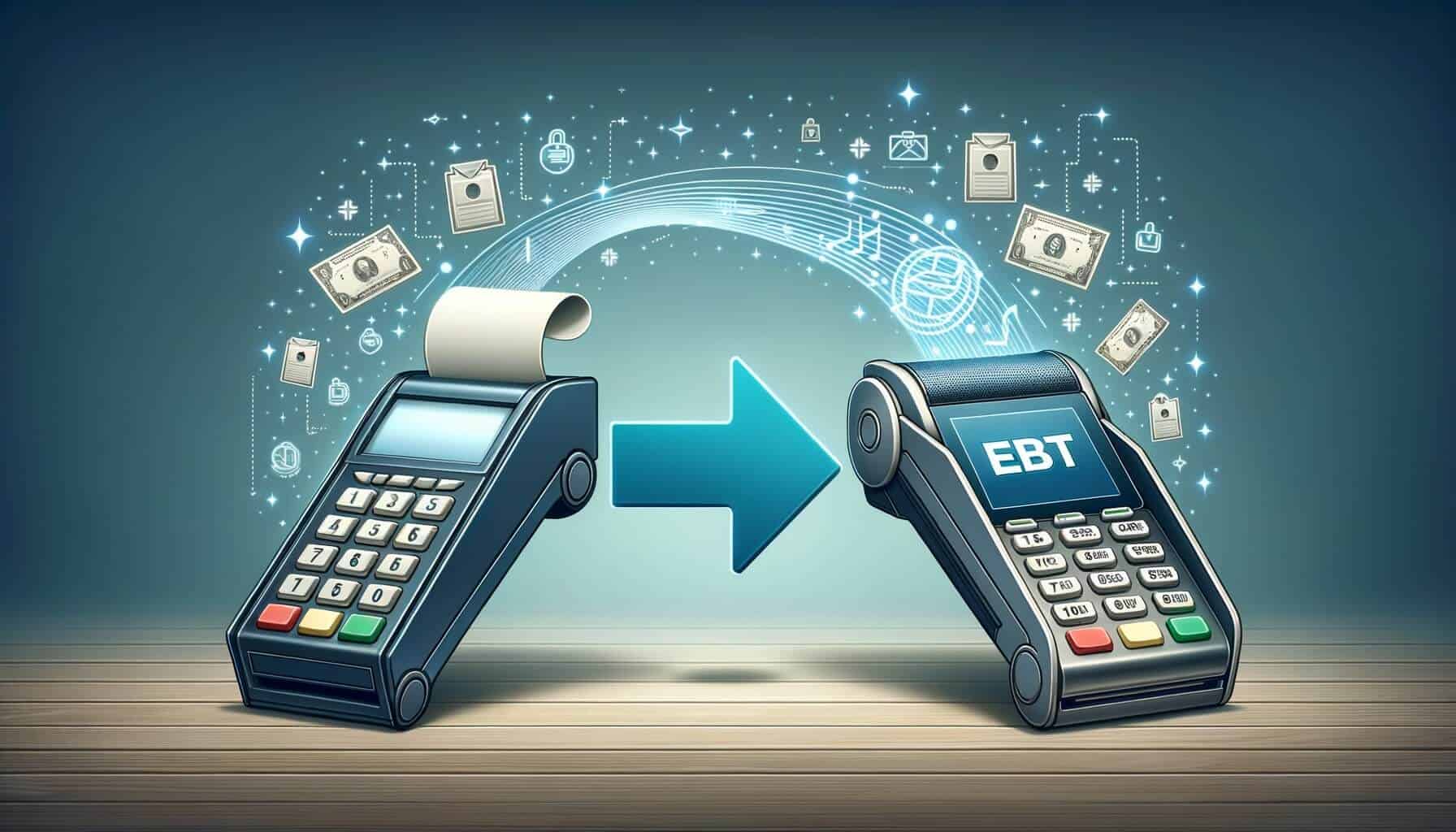
By Sharon Watson April 9, 2025
In today’s digital age, electronic payment processing has become the norm for businesses of all sizes. One such payment method that has gained popularity is Electronic Benefit Transfer (EBT) payment processing. EBT is a system that allows recipients of government assistance programs, such as the Supplemental Nutrition Assistance Program (SNAP) and Temporary Assistance for Needy Families (TANF), to make purchases using a plastic card similar to a debit or credit card.
In this comprehensive guide, we will explore the benefits of transitioning to EBT payment processing, provide a step-by-step guide to setting it up for your business, discuss factors to consider when choosing an EBT payment processor, explain how to integrate EBT payment processing into your point of sale system, address compliance and security concerns, offer tips for training your staff, troubleshoot common issues, and answer frequently asked questions.
Understanding the Benefits of Transitioning to EBT Payment Processing

Transitioning to EBT payment processing offers numerous benefits for businesses. Firstly, it allows you to tap into a large customer base that relies on government assistance programs. According to the United States Department of Agriculture (USDA), over 42 million Americans participated in SNAP in 2020. By accepting EBT payments, you can attract these customers and increase your sales potential.
Secondly, EBT payment processing eliminates the need for cash transactions, reducing the risk of theft and fraud. With EBT, funds are electronically transferred from the customer’s account to your business, ensuring a secure and efficient payment process.
Furthermore, accepting EBT payments can enhance your reputation as a socially responsible business. By supporting government assistance programs, you demonstrate your commitment to helping those in need and contribute to the overall well-being of your community.
Step-by-Step Guide: Setting Up EBT Payment Processing for Your Business

Setting up EBT payment processing for your business involves several steps. Here is a step-by-step guide to help you navigate the process:
1. Determine eligibility: Before proceeding, ensure that your business qualifies to accept EBT payments. Eligibility requirements vary by state, so check with your local government agency responsible for administering EBT programs.
2. Obtain necessary permits and licenses: Contact your state’s EBT program office to obtain the required permits and licenses. They will guide you through the application process and provide you with the necessary forms.
3. Choose an EBT payment processor: Research and select an EBT payment processor that meets your business needs. Consider factors such as fees, customer support, and integration capabilities.
4. Complete the application: Fill out the application provided by your chosen EBT payment processor. Provide accurate information about your business, including your EIN, business address, and bank account details.
5. Install necessary equipment: Depending on your chosen EBT payment processor, you may need to install specific equipment, such as a point of sale (POS) terminal or a card reader. Follow the manufacturer’s instructions to set up the equipment correctly.
6. Test the system: Before accepting EBT payments from customers, conduct a test transaction to ensure that the system is functioning properly. This will help you identify and resolve any issues before going live.
7. Train your staff: Educate your staff on the EBT payment process, including how to handle EBT cards, enter transactions, and troubleshoot common issues. This will ensure a smooth experience for both your employees and customers.
8. Promote your acceptance of EBT payments: Once your EBT payment processing system is up and running, advertise that you accept EBT payments. Display signs or stickers at your storefront and include the information on your website and social media platforms.
Choosing the Right EBT Payment Processor: Factors to Consider

Selecting the right EBT payment processor is crucial for a seamless payment experience. Consider the following factors when choosing an EBT payment processor for your business:
1. Fees: Compare the fees charged by different processors. Look for transparent pricing structures and consider the overall cost, including transaction fees, monthly fees, and any additional charges.
2. Integration capabilities: Ensure that the EBT payment processor can integrate with your existing point of sale system. This will streamline the payment process and avoid the need for manual entry.
3. Customer support: Evaluate the level of customer support provided by the EBT payment processor. Look for a processor that offers 24/7 support and multiple channels of communication, such as phone, email, and live chat.
4. Security measures: Verify that the EBT payment processor adheres to industry-standard security protocols, such as encryption and tokenization. This will protect sensitive customer data and minimize the risk of data breaches.
5. Reporting and analytics: Consider the reporting and analytics capabilities offered by the EBT payment processor. Access to detailed transaction data can help you gain insights into customer behavior and make informed business decisions.
Integrating EBT Payment Processing into Your Point of Sale System
Integrating EBT payment processing into your point of sale (POS) system is essential for a seamless payment experience. Here are the steps to follow:
1. Check compatibility: Ensure that your POS system is compatible with the EBT payment processor you have chosen. If not, you may need to upgrade your POS system or switch to a compatible one.
2. Install necessary software: Install the software provided by the EBT payment processor onto your POS system. Follow the instructions provided by the processor to ensure a successful installation.
3. Configure settings: Configure the settings within your POS system to enable EBT payment processing. This may involve entering specific codes or enabling EBT as a payment option.
4. Test the integration: Conduct test transactions to ensure that the integration between your POS system and the EBT payment processor is functioning correctly. Verify that EBT payments are being processed accurately and reflected in your sales reports.
5. Train your staff: Train your staff on how to use the integrated EBT payment processing system. Provide them with clear instructions on how to select the EBT payment option, enter the transaction amount, and troubleshoot any issues that may arise.
Ensuring Compliance and Security in EBT Payment Processing
Compliance and security are paramount when it comes to EBT payment processing. Follow these guidelines to ensure that your business remains compliant and customer data is secure:
1. Familiarize yourself with regulations: Stay up to date with the regulations governing EBT payment processing in your state. Familiarize yourself with the rules and requirements to ensure compliance.
2. Safeguard customer data: Implement robust security measures to protect customer data. This includes using encryption technology, regularly updating software, and training your staff on data security best practices.
3. Conduct regular audits: Regularly audit your EBT payment processing system to identify any vulnerabilities or potential compliance issues. Address any findings promptly to maintain a secure and compliant environment.
4. Maintain accurate records: Keep detailed records of EBT transactions, including transaction amounts, dates, and customer information. This will help you reconcile your records and address any discrepancies that may arise.
Training Your Staff on EBT Payment Processing Procedures
Properly training your staff on EBT payment processing procedures is crucial for a smooth payment experience. Follow these steps to ensure your staff is well-prepared:
1. Provide comprehensive training materials: Develop training materials that cover all aspects of EBT payment processing, including how to handle EBT cards, enter transactions, and troubleshoot common issues. Make these materials easily accessible to your staff.
2. Conduct training sessions: Schedule training sessions to educate your staff on EBT payment processing procedures. Use a combination of presentations, demonstrations, and hands-on practice to reinforce their understanding.
3. Assign a point person: Designate a staff member as the point person for EBT payment processing. This individual will serve as the go-to resource for any questions or issues related to EBT payments.
4. Offer ongoing support: Provide ongoing support to your staff as they become familiar with EBT payment processing. Encourage them to ask questions and address any concerns promptly.
5. Regularly update training materials: As regulations and procedures evolve, update your training materials accordingly. This will ensure that your staff remains knowledgeable and compliant with the latest requirements.
Troubleshooting Common Issues in EBT Payment Processing
Despite careful planning and preparation, issues may arise during EBT payment processing. Here are some common issues and their potential solutions:
1. Card not accepted: If a customer’s EBT card is not being accepted, ensure that the card is valid and has sufficient funds. If the issue persists, contact your EBT payment processor’s customer support for assistance.
2. Transaction declined: If a transaction is declined, verify that the transaction amount does not exceed the customer’s available balance. If the issue persists, check your internet connection and ensure that your EBT payment processing system is functioning correctly.
3. Slow transaction processing: Slow transaction processing can be caused by various factors, such as network congestion or outdated software. Check your internet connection speed and ensure that your software is up to date. If the issue persists, contact your EBT payment processor for further assistance.
4. Discrepancies in sales reports: If you notice discrepancies between your sales reports and EBT payment records, investigate the issue promptly. Check for any manual entry errors or system glitches. If the issue persists, contact your EBT payment processor for guidance.
Frequently Asked Questions about EBT Payment Processing
Q1: What is EBT payment processing?
A1: EBT payment processing is a system that allows recipients of government assistance programs to make purchases using a plastic card similar to a debit or credit card.
Q2: How do I become eligible to accept EBT payments?
A2: Eligibility requirements vary by state. Contact your local government agency responsible for administering EBT programs to determine your eligibility.
Q3: Can I accept EBT payments online?
A3: Currently, EBT payments can only be accepted in-person at physical locations. Online acceptance of EBT payments is not yet available.
Q4: Are there any fees associated with EBT payment processing?
A4: Yes, EBT payment processors typically charge fees for their services. These fees may include transaction fees, monthly fees, and additional charges. Compare different processors to find the most cost-effective option for your business.
Q5: Can I accept both EBT and traditional payment methods?
A5: Yes, you can accept both EBT and traditional payment methods. Ensure that your point of sale system is capable of processing multiple payment types.
Conclusion
Transitioning to EBT payment processing can bring numerous benefits to your business, including access to a large customer base, enhanced security, and a socially responsible image. By following the step-by-step guide provided in this comprehensive article, you can successfully set up EBT payment processing for your business.
Remember to choose the right EBT payment processor, integrate it into your point of sale system, ensure compliance and security, train your staff, and troubleshoot common issues. By doing so, you will be well-equipped to provide a seamless payment experience for your customers and maximize the potential of EBT payments for your business.